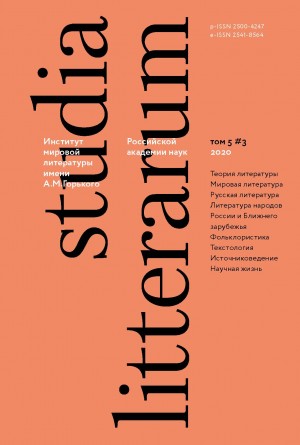Conference “‘Eternal’ Plots and Images in Literature and Art of Russian Modernism" (November 16–17, IWL RAS)
Journal title: Studia Litterarum
Authors: S.A. Serjogina
Subject(s): Literature, Languages and Literature

Journal title: Studia Litterarum
Authors: S.A. Serjogina
Subject(s): Literature, Languages and Literature
Journal title: Studia Litterarum
Authors: Irina K. Staf
Subject(s): Literature, Languages and Literature
Journal title: Studia Litterarum
Authors: Alexey N. Belarev
Subject(s): Literature, Languages and Literature
Journal title: Studia Litterarum
Authors: Alexander B. Kudelin
Subject(s): Literature, Languages and Literature
Journal title: Studia Litterarum
Authors: Ekaterina N. Vasilyeva
Subject(s): Literature, Languages and Literature
Journal title: Studia Litterarum
Authors: Julietta L. Chavchanidze
Subject(s): Literature, Languages and Literature
Journal title: Studia Litterarum
Authors: Kirill A. Chekalov
Subject(s): Literature, Languages and Literature
Journal title: Studia Litterarum
Authors: Vera V. Kotelevskaya
Subject(s): Literature, Languages and Literature
Journal title: Studia Litterarum
Authors: Eugenyia M. Butenina
Subject(s): Literature, Languages and Literature
Journal title: Studia Litterarum
Authors: Nina D. Lyakhovskaya
Subject(s): Literature, Languages and Literature
Journal title: Studia Litterarum
Authors: Marianna V. Kaplun
Subject(s): Literature, Languages and Literature
Journal title: Studia Litterarum
Authors: Igor A. Vinogradov
Subject(s): Literature, Languages and Literature
Journal title: Studia Litterarum
Authors: Alexander V. Markov
Subject(s): Literature, Languages and Literature
Journal title: Studia Litterarum
Authors: Ekaterina A. Esenina
Subject(s): Literature, Languages and Literature
Journal title: Studia Litterarum
Authors: Elena A. Papkova
Subject(s): Literature, Languages and Literature